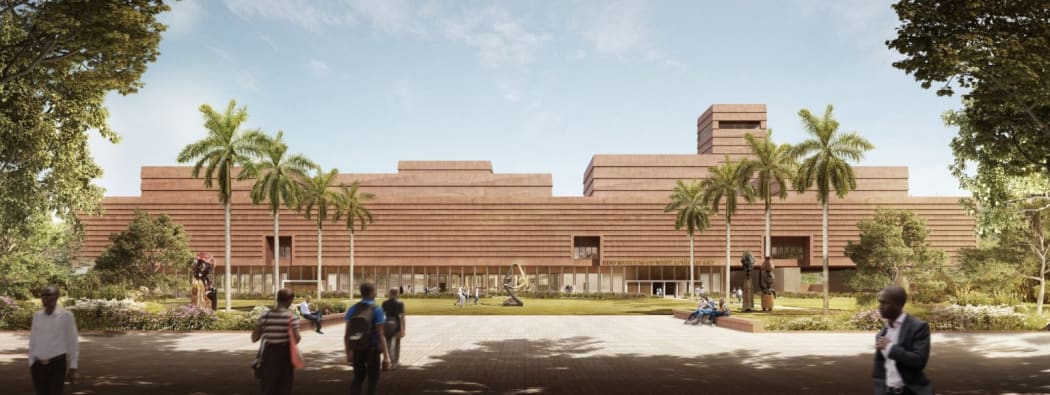
The British architect Sir David Adjaye has revealed his plans for the planned Edo Museum of West African Art (EMOWAA) in Benin City, Nigeria. Blog readers might remember how a Yoruba post inspired his design for the new African American History Museum in Washington D.C. (as written about here). Princeton University also just announced the architect designed their new Art Museum (info).
In this article in The New York Times, Adjaye explains how the project for the planned Edo Museum of West African Art is very close to his heart.
On November 13th, the architect, the British Museum and the Nigerian authorities already had announced a $4 million archaeology project to excavate the site of the planned museum, and other parts of Benin City, to uncover ancient remains including parts of the city walls (info here). This will be the most extensive archaeological excavation ever undertaken in Benin City. In the interview, Adjaye explains how they play an integral part in this story:
I’ve been obsessed with these walls: concentric circles that interact with each other and create this kind of extraordinary pattern. From satellite images, it’s bigger than the Great Wall of China. So we want an excavation so we can make them visible. With the (museum) building, it’s a kind of re-enactment of the palace walls, with these turrets and pavilions appearing behind them, a kind of abstraction of how Benin City would have looked before — what you’d have encountered if you came precolonization. It’s trying to make a fragment of the experience in a contemporary language.
Adjaye intents the museum to be completed in five years (while the Smithsonian took nine, and the money to build it still needs to be raised (!). The building is intended to house some 300 items on loan from European museums and aims ” to house the most comprehensive display in the world of Benin Bronzes, alongside other collections”. Please note that although the museum has “West African Art” in its title all press releases only talk about its holdings of Nigerian Art (but I did spot two giant Baule statues from Ivory Coast in the front garden).
Creating a state-of-the-art conservation context for those objets will indeed take away the argument that Nigeria doesn’t have the resources to properly care for the objects it wishes to see returned. However it remains to be seen what will happen with the about 50 government owned museums across Nigeria, which are all heavily underfunded, as spelled out in this article from 2018 in Nigeria’s Guardian newspaper. Let’s not forget a Federal Government-Ford Foundation project aimed at remodelling the existing National Museum in Lagos, worth $2 million dollar was recently suspended by the foreign donor due to the inability of the government to provide N500 million counterpart funding. With the underfunding of the existing museums, it remains to be seen if the funding for the EMOWAA can be found.
The local apathy for cultural heritage indeed is a factor rarely taken into consideration in the current restitution debate. Don’t forget that between 2007 and 2019 the Nigerian government even removed history from the primary and secondary school curriculum (info). This interview with Ibironke Ashaye, who worked for the National Commission for Museum and Monuments (NCMM), is very enlightening on this subject and highly recommended to get a better view on the local agency for such projects. It is clear that building a museum can only be a first step, and I hope a long-term vision will be developed. As museum professionals know well enough, a museum has to be much more than just a fancy building.
However, it is Adjaye’s profound wish to stimulate a cultural revival in Nigeria with the help of the planned Edo Museum. “It could help spark “a renaissance of African culture,” he said, and be a space for residents to reconnect with their past and a showcase for the city’s contemporary artists.” “It has to be for the community first,” he said, “and an international site second.” Adjaye’s further elaborates on this in the NYT interview.

